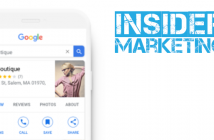3. Rack cards are a great way to acquire new customers, as these cards are typically located in hotels and restaurants, in high-visibility areas where people tend to wait (near the hostess stand or hotel check-in area, typically). The key to success with rack cards is to have the pertinent information near the top third of the card, as that is the only information that is visible before the viewer picks up the card. You may also want to consider:
› Negotiating with the business owners to display your cards in the highly-coveted top left corner of the display;
› Including a small coupon on the rack card to incentivize visitors to call.
Remember, while these are incredibly popular tools in tourist areas, they are not nearly as successful if you are targeting a primarily local market.
4. Referral partners can take on a variety of forms, but typically involve some sort of reciprocal referral benefit with an indirect competitor (i.e., a rafting company) or complementary service provider (i.e., a restaurant). This may include website links, rack card/brochure displays, discounted package deals, or even a percentage of sales (the latter of which is most common when working with group sales).
Common uses of referral partners:
› partnering with a hotel or conference center to refer large groups in exchange for a small percentage of sales (great for all markets that have a major conference center nearby);
› offering coupons to a nearby restaurant in exchange for prominent brochure/rack card display space (best for tourist markets);
› bundling a park ticket with another outdoor activity for a lower total cost (great for tourist markets that cater heavily toward outdoor enthusiasts);
› offering reciprocal website links (great for any market);
› giving away a small number of “free” park tickets to a local chamber of commerce in exchange for advertising space and visibility (best for local markets).
5. Media days are one of the best ways to attract attention. Once a season, typically about a month before opening day, parks will open up to all local press, free of charge. This is a great way to generate publicity—as long as you leverage it properly.
One way to ensure consistent media representation is to have a press kit ready to give away. Consider a digital option to make it portable—a custom USB stick drive, for example. Owners should be present and available to answer all media questions—and avoid giving away extraneous information that may be misconstrued.
Press outlets are motivated to write a good story, not necessarily to portray your park in the light that you intended. Show them the best version of your park that you can, and when possible, create the right story angle.
TESTING AND MEASURING
No matter how much research you put into your target markets, trying out a new marketing tool may feel like a shot in the dark. You need a system of testing and measuring to find out if the tool is working . It’s one thing to ask clients how they heard about you, and quite another to get them to answer. By having a “how did you hear about us” field on a mandatory piece of paperwork, like a waiver or online credit card form, you are much more likely to elicit a response. This is also best served as a multiple-choice question.
Another way to track visitors, at least for online tools, is through analytics. Google has a great analytics tool that we think should be mandatory for every website, but most online marketing software tools and social media pages have ways to track visitor data as well.
Once you’ve collected that data, compile it and use it to your advantage. If you’re spending 80 percent of your marketing budget on billboards, and you’re only getting 15 percent of your clients from this stream, then you should probably reevaluate where your dollars are going. On the contrary, if 90 percent of your foot traffic is web-based, and only 25 percent of your marketing budget is going there, then it’s time to ramp up that web presence.
No matter where your marketing efforts go, you will need to spend some dollars in order to get to where you want to be. But if you can leverage your market research while consistently testing and measuring your tools, your dollars will go much further. So pick something that seems to fit, budget for it, do it well, and don’t be afraid to ask your guests how they found you.






